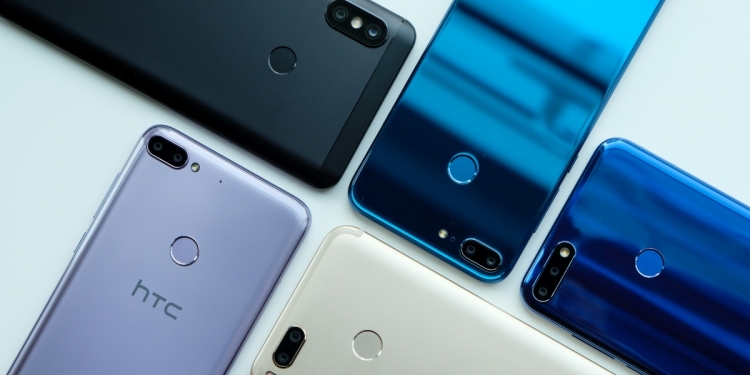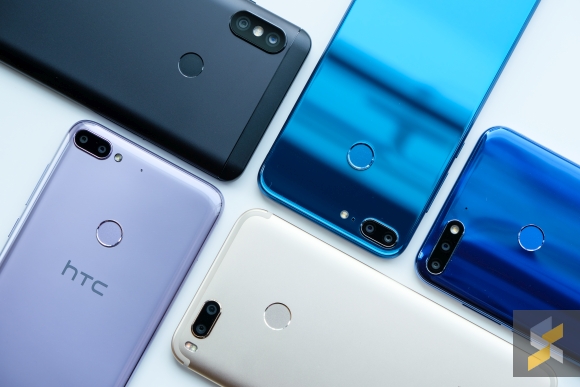What a year it has been so far since the last time we published our best smartphones under RM1,200 (2018 edition). We changed governments in a historic election nobody saw coming, the Goods and Services Tax (GST) is now zero-rated and, of course, a whole bunch of brand new affordable smartphones launched.
We thought about a simple update to our original guide, but because so much has changed, we figured it would be a disservice for you to just add the couple of new phones to the end of that one. Instead, we decided that it would be better if we gave the whole guide a proper face-lift, featuring the new updated GST-less budget smartphones, several brand new handsets and a revised Editor’s Choice section.
Here’s our ultimate budget smartphone guide Part 2.
Before we get started, there are a few things you should know about this updated guide. To better reflect the current landscape of budget handsets, we’ve added a whole bunch of brand new devices that have been launched in the past few months. These include the ASUS’ killer budget ZenFone Max Pro M1, the rock-solid Nokia 6.1 and a couple of brand new selfie experts.
But, we also removed several handsets that were previously in the list, devices that we found were too old or too difficult to find reliable vendors online. So, if nothing here interests you, you can still check out our previous list for more options.
The list also contains updated prices for each smartphone now that GST is zero-rated. That said, since several of these devices aren’t brand new anymore, there is a much higher chance that you can pick them up for a price that’s much lower than the RRP we list thanks to discounts and promotions.
In any case, let’s get into the meat and potatoes of it all. For those who are new to our smartphone guides, you will find an entry for each smartphone in the following pages. Each entry will contain a brief rundown on some of the specs and some other features we think you should know about that particular smartphone.
In each entry, we will also provide links to where you can buy these phones online. However, keep in mind that we will not be responsible for any purchases you make, so do so at your own discretion. We would generally advise users to make purchases from reputable sellers or official stores. We also advise users to purchase devices with official Malaysian warranties to avoid any complications should problems arise with that particular device. Sure, there may be instances where imported sets are more affordable, but the risks associated with it are also higher.
Then, on the second last page, you’ll find our massive comparison table so you can see how each phone stacks up against each other at a glance. Finally, on the last page we will have an “Editor’s Choice” list where we pick our top three best handsets for the money.
Ready? Let’s get things started.
[nextpage title=”Xiaomi Redmi Note 5″]
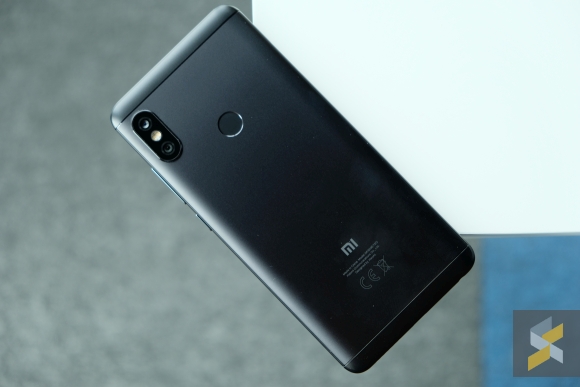
For two years in a row, Xiaomi’s Redmi Note devices have been the reigning champions on our list and it isn’t hard to see why. Despite the fact that a lot of its competition has raised its prices, Xiaomi’s managed to keep their Redmi Note smartphones priced under RM1,000 while also offering better specs.
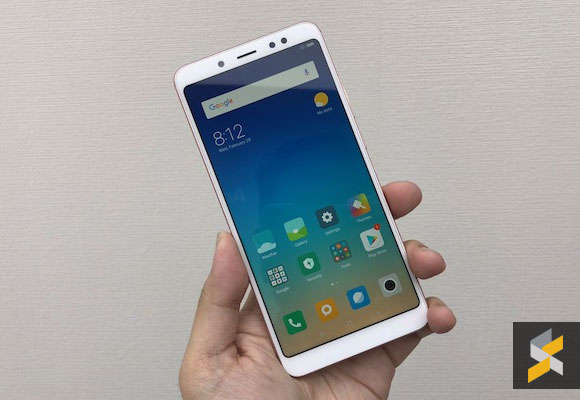
This year’s Redmi Note 5 danced dangerously close to the edge of RM1,000, with the most capable variant being priced at RM939, but it is also the best Redmi Note smartphone they’ve made yet.
Xiaomi just slashed the price of their best Redmi Note smartphone to date so now even the top-spec version is priced at RM869. On the other hand, the base model will now retail for RM699.
In the past, the camera experience has definitely been the weakest link in the otherwise rock solid package this handset offers. This year, they’ve taken their camera to the next level with a dual-camera setup that features a 12MP main sensor with an f/1.9 aperture lens and a secondary 5MP camera for depth effects. The best part about this camera is the fact that it has Dual Pixel autofocus — yes, the same kind you’d find in some of Samsung’s best flagship handsets.
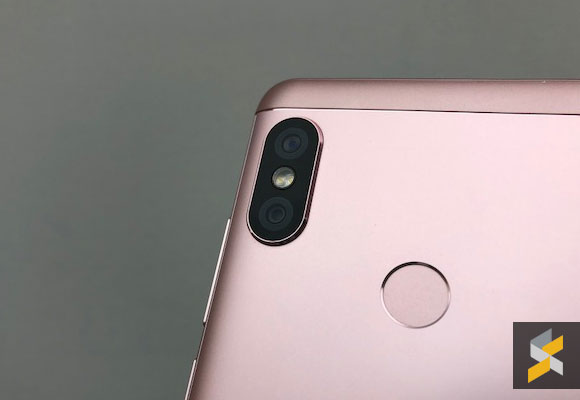
Couple that with the excellent value-for-money hardware that includes a Snapdragon 636 processor, up to 4GB of RAM and 64GB of internal storage, a 4,000 mAh battery, fingerprint scanner, large 5.99-inch Full HD+ 18:9 aspect ratio display plus a premium metal body, and you’ve got one killer smartphone on your hands. Also, a nice little bonus feature is that the Redmi Note 5 actually supports dual 4G standby.
Read our full review for more details.
Xiaomi Redmi Note 5 — 3GB RAM, 32GB storage — RM699
Xiaomi Redmi Note 5 — 4GB RAM, 64GB storage — RM869
Where to buy:
Online: Shopee, Lazada
Store: Authorised Mi retailers
[nextpage title=”Xiaomi Redmi 5 Plus”]
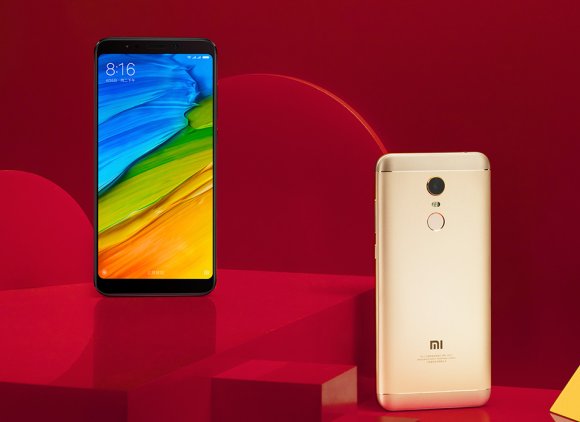
This is the first time Xiaomi’s “basic” Redmi smartphone has made it into our list of smartphones under RM1,200. However, if you consider the fact that the Redmi 5 Plus was initially thought of as the replacement to the Redmi Note 4, you probably wouldn’t be too surprised.
Nevertheless, the Redmi 5 Plus is a capable phone and can definitely hold its own among the “big boys” on this list. In many ways, it’s very similar to last year’s Redmi Note 4 as it packs a frugal Snapdragon 625 octa-core processor with a choice of 3GB or 4GB of RAM and 32GB or 64GB of internal storage. It’s also got a metal body, a large 4,000 mAh battery and a tall 5.99″ Full HD+ display pushing a resolution of 2160×1080 pixels.
The biggest difference between this and the Redmi Note 5 — besides its processor — is its camera, where you’re getting a more pedestrian 12-megapixel f/2.2 aperture main shooter and a 5-megapixel f/2.2 selfie camera.
However, this phone has the benefit of being more affordable, with prices starting at RM679 for the base model and going up to RM799 for the top-spec variant. This means you can save up to RM100 if you pick this over its Redmi Note relative, which makes it idea for those on a tighter budget.
Xiaomi Redmi 5 Plus — 3GB RAM, 32GB storage — RM679
Xiaomi Redmi 5 Plus — 4GB RAM, 64GB storage — RM799
Where to buy:
Online: Shopee, Lazada
Store: Authorised Mi retailers
[nextpage title=”Xiaomi Mi A1″]
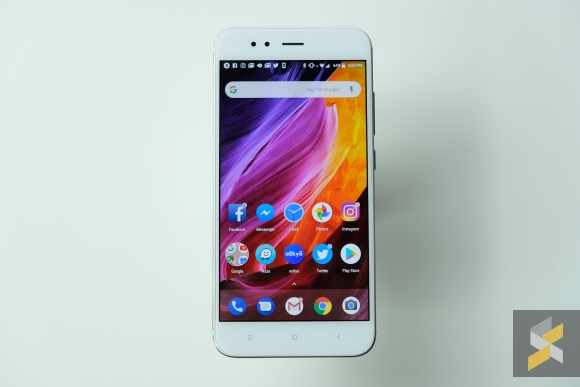
The Xiaomi Mi A1 was last year’s poster child for a value budget smartphone because it combined the smooth fluidity and frequent updates of stock Android with the bang-for-buck hardware specs of Xiaomi. In theory, it was a match made in heaven and for the most part the smartphone definitely lived up to it, making it one of my go-to recommendations whenever people ask for a budget smartphone recommendation.
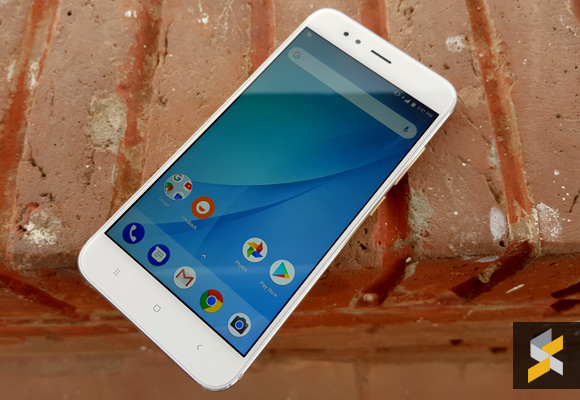
Its key feature lies in its software as the Mi A1 is the first handset in Google’s new revamped Android One program. This means the smartphone comes with a super slick stock Android experience and you are almost guaranteed consistent security updates and software support for two years after the handset has launched. This means, you should, at least, get Android P when it eventually launches as well.
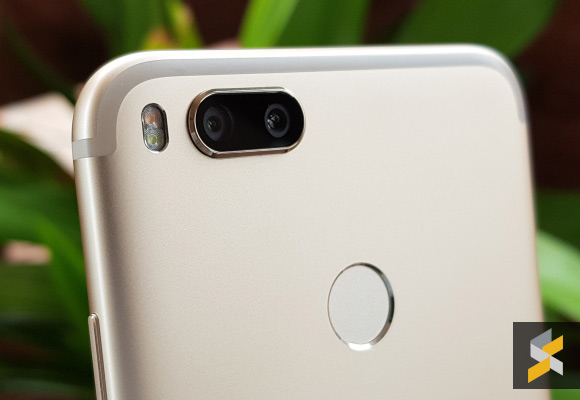
On the hardware side of things, Xiaomi’s Mi A1 is powered by a Snapdragon 625 processor mated to 4GB of RAM with either 32GB or 64GB of internal storage.
Besides that, the Mi A1 features a dual-camera setup at the back with two 12MP sensors — similar to that on the Mi 6 flagship handset — so you have 2X telephoto zoom capabilities as well as Portrait Mode features. The only unfortunate thing about this camera is its lack of optical image stabilisation.
Xiaomi Mi A1 — 4GB RAM, 32GB storage — RM599
Xiaomi Mi A1 — 4GB RAM, 64GB storage — RM799
Where to buy:
Online: Shopee, Lazada
Store: Authorised Mi retailers
[nextpage title=”Huawei Nova 2i”]
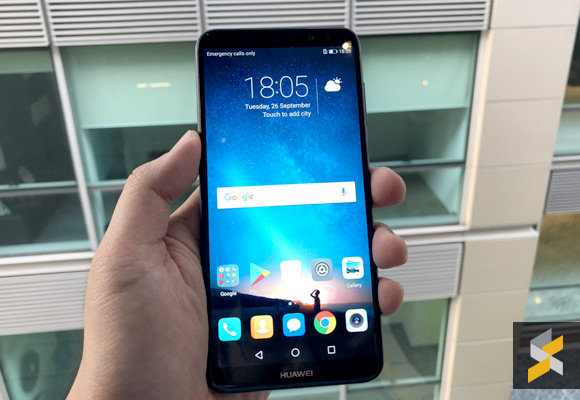
Eager to get a slice of that selfie lover segment of the market that’s dominated by OPPO, Huawei released their first quad-camera smartphone in the Nova 2i. And boy did they do a good job at it. On launch, it was one of the best value-for-money mid-range handsets in the market that featured a slim-bezeled 5.93-inch Full HD+ 18:9 aspect ratio display that you may now know as the “Full View” display.
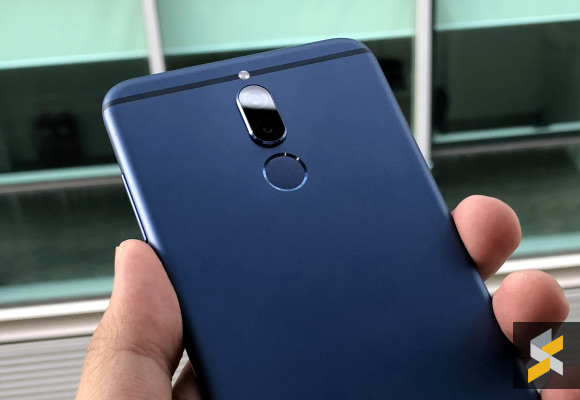
Today, the price has dropped significantly and although its RRP is still RM942, you can often find this phone for far less. Its specs are still solid, packing a Kirin 659 octa-core processor, 4GB of RAM and 64GB of internal storage that you can further expand with a microSD card.
For photos, you get a 16MP + 2MP dual camera at the back and a 13MP + 2MP dual camera in front so you can get bokeh-fied shots no matter which camera you use.
Huawei Nova 2i — 4GB RAM, 64GB storage — RM942
Where to buy:
Online: Shopee, Lazada
Store: Authorised Huawei retailers
[nextpage title=”Huawei Nova 2 Lite”]
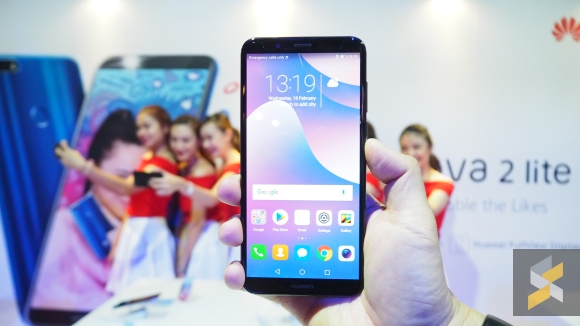
Launched as a more affordable alternative to the Huawei Nova 2i, the Nova 2 Lite comes in at a slightly more affordable retail price of RM659. However, you are giving up quite a lot for that lower price tag because you’re getting a lower resolution 5.99-inch HD+ screen and an entry-level Snapdragon 430 octa-core processor. RAM and storage also takes a hit, being bumped down to 3GB and 32GB respectively.
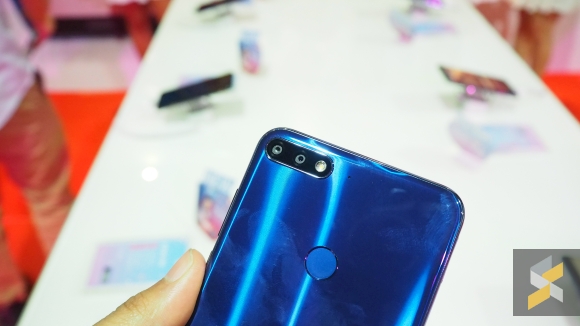
For photography, you’re getting a 13MP + 2MP dual camera at the back with an 8MP f/2.0 aperture selfie shooter in front. Keeping the lights on is a 3,000 mAh battery, which is also 340 mAh less than the Nova 2i. Sealing its fate as the “Lite” phone is the handset’s decidedly plastic body, making this one of the only two handsets on this list with a plastic shell.
Huawei Nova 2 Lite — 3GB RAM, 32GB storage — RM659
Where to buy:
Online: Shopee, Lazada
Store: Authorised Huawei retailers
[nextpage title=”honor 7X”]
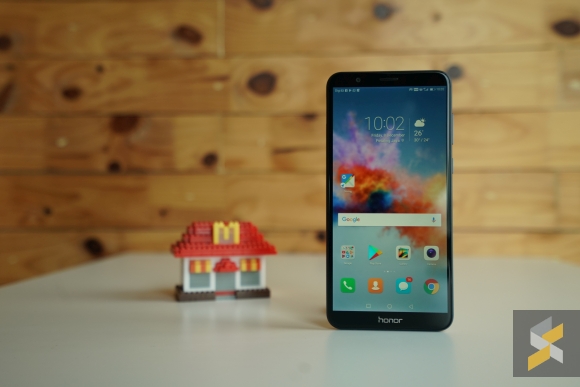
When you think of bang-for-buck phones, there is really only one brand in the market you think of besides Xiaomi, and that brand is honor. This year, their affordable mid-ranger is called the honor 7X and it’s an excellent device for the money.
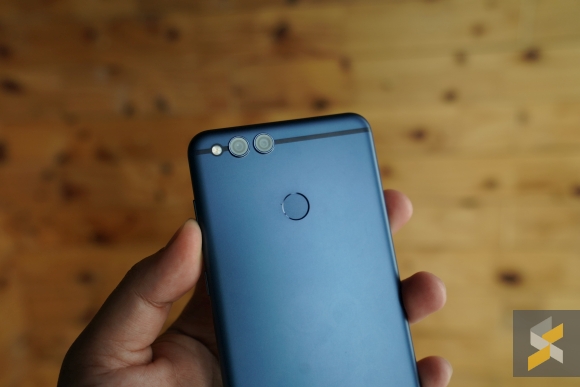
Inside, the honor 7X is powered by a Kirin 659 processor mated to 4GB of RAM and 64GB of internal storage. It’s also got a 3,340 mAh battery to keep the lights on and a 16MP + 2MP primary camera at the back for bokehlicious photos. If you think those specs sound familiar, that’s because they are. They’re pretty much identical to that of Huawei’s Nova 2i.
The only part where the honor 7X loses out is in the front camera, where the honor 7X only features an 8MP selfie shooter compared to the Nova 2i’s dual-camera selfie shooter. Still, you do save some money so if selfies aren’t your thing, this may be the better device for you.
honor 7X — 4GB RAM, 64GB storage — RM829
Where to buy:
Online: Shopee, Lazada
Store: Authorised honor retailers
[nextpage title=”honor 9 Lite”]
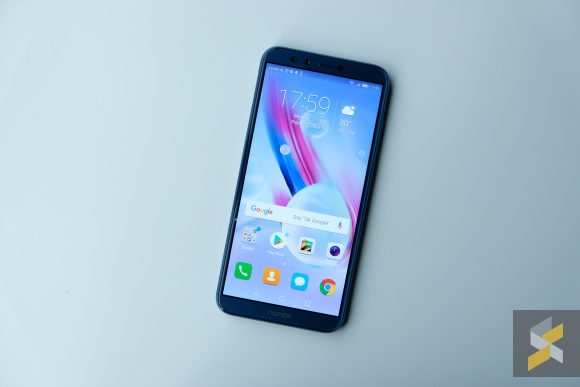
Of the two honor smartphones on this list, the honor 9 Lite is the more selfie-centric one because it has a 13MP + 2MP dual camera system in both the front and back of the smartphone. This allows you to take portrait mode photos and get blurry backgrounds to make your selfies pop.
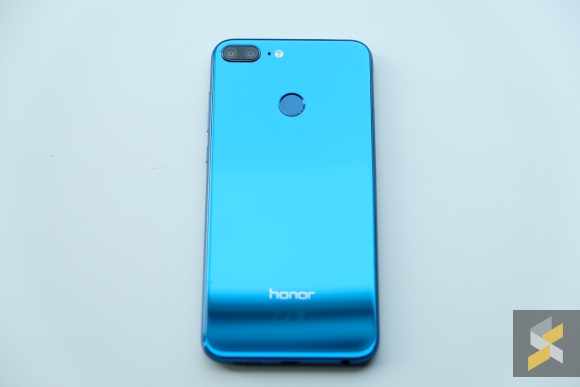
It is also the more affordable honor handset but you do get less smartphone. Its screen, for example, is smaller, measuring just 5.65 inches but it still pushes a resolution of Full HD+, which is nice. The honor 9 Lite is also powered by a Kirin 659 processor, but it gets just 3GB of RAM and 32GB of internal storage. You’re also getting a smaller 3,000 mAh battery similar to the Huawei Nova 2 Lite.
honor 9 Lite — 3GB RAM, 32GB storage — RM659
Where to buy:
Online: Shopee, Lazada
Store: Authorised honor retailers
[nextpage title=”Wiko View2 Pro”]
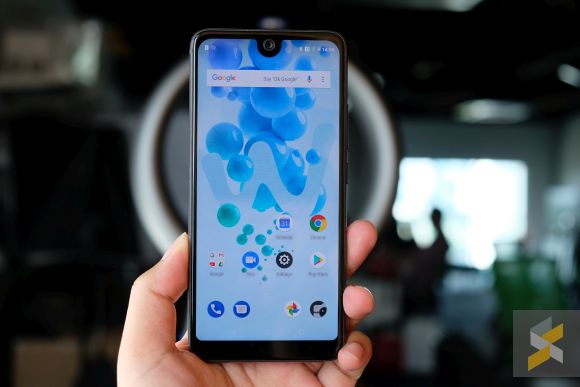
This is Wiko‘s latest View smartphone. It’s called the View2 Pro and it is definitely the most well-built one we’ve seen yet. It’s got a nice metal frame with a glossy back that feels like glass but is actually plastic.
In front, it’s got a 6-inch HD+ LCD display with slim bezels all round except for the chin. There is a tiny notch at the top where the single 16MP selfie shooter sits so it does look a lot like the Essential Phone.
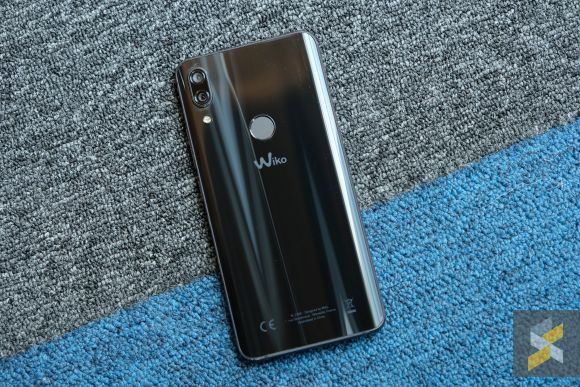
Inside, it’s powered by an entry-level Qualcomm Snapdragon 450 processor that’s mated to 4GB of RAM and 64GB of internal storage. At the back, the device sports a dual 16MP camera where one has your regular wide angle while the other has a 120-degree super wide angle lens. Keeping everything running is a 3,000 mAh battery.
In a previous version of this guide, we included the Wiko View and Wiko View Prime smartphones, but because those phones have become difficult to find, we decided to replace them with the newer Wiko View2 Pro.
Wiko View2 Pro — 4GB RAM, 64GB storage — RM999
Where to buy:
Online: 11street
Store: Authorised Wiko retailers
[nextpage title=”Meizu M6s”]
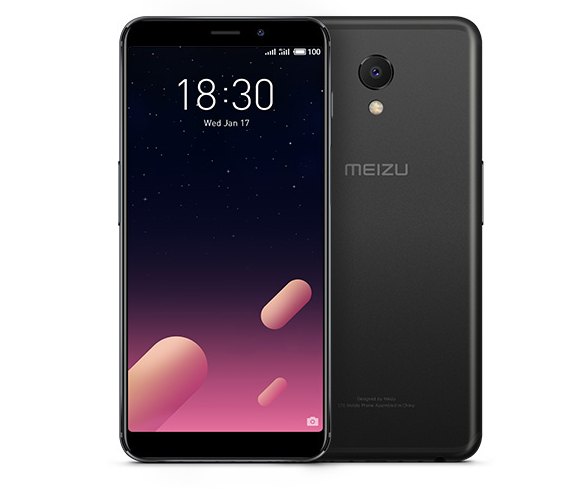
Meizu’s M6s is a fairly sleek looking smartphone from the Chinese smartphone maker. It makes some interesting design choices but the phone in itself is reasonably spec-ed for its price tag. In fact, it is the most affordable handset on this list.
In front, the phone packs a 5.7-inch display but it only pushes a HD+ resolution of 1440×720 pixels. Inside, it’s powered by a Samsung Exynos 7872 hexa-core processor that is basically a tuned down version of the processor you’d find in the Samsung Galaxy A8. That SoC is then mated to 3GB of RAM and 32GB of internal storage, plus a 3,000 mAh battery to keep everything running.
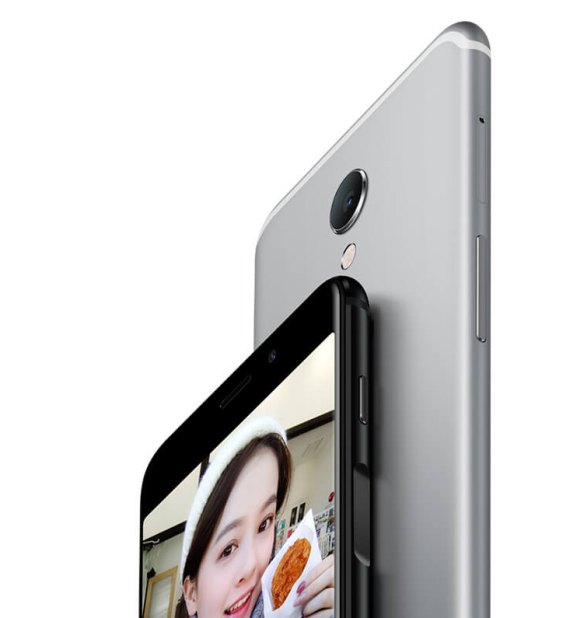
For photos, it gets a 16MP f/2.0 main camera and an 8MP f/2.0 selfie shooter so there’s nothing out of the ordinary here. Its body is made of metal and Meizu made the questionable design choice of mounting the fingerprint scanner on the side of the handset ala-Sony.
Meizu M6s — 3GB RAM, 32GB storage — RM599
Where to buy:
Online: Shopee, Lazada
Store: Authorised Meizu retailers
[nextpage title=”Samsung Galaxy J7 Pro”]
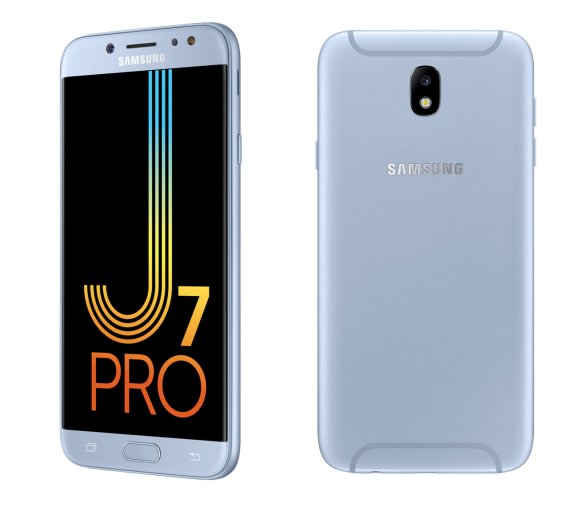
Samsung’s new crop of J-series smartphones are objectively attractive devices considering their position in the South Korean electronics giant’s hierarchy. Previous Galaxy J phones have always been a little nasty but this year they’ve definitely improved.
And the Galaxy J7 Pro is the most capable one in the line. In front, the handset features an AMOLED display measuring 5.5 inches with a Full HD resolution of 1920×1080 pixels. However, this phone is still in that 16:9 aspect ratio and still features rather fat bezels.
That said, you do get to keep the front fingerprint scanner and capacitive back and menu keys. Inside, it’s powered by an Exynos 7870 octa-core processor mated to 3GB of RAM and 32GB of internal storage. It also has 13MP cameras on the front and back while a 3,600 mAh battery keeps the phone running.
Samsung Galaxy J7 Pro — 3GB RAM, 32GB storage — RM1,029
Where to buy:
Online: Shopee, Lazada
Store: Authorised Samsung retailers
[nextpage title=”Samsung Galaxy J6″]
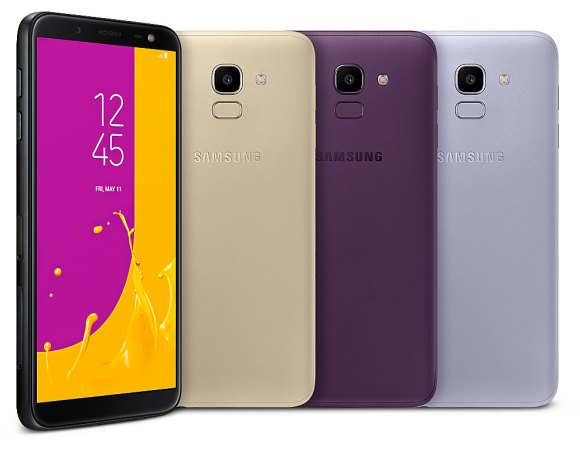
Samsung launched a whole new set of affordable mid-range handsets in May of 2018 that included a bunch of new devices for the Galaxy J and Galaxy A lineup. One of them, priced neatly at RM749 is the Galaxy J6.
This phone sports a 5.6-inch Super AMOLED display that pushes a resolution of HD+ (1480×720 pixels). Although the resolution is a little disappointing, the AMOLED panel should mean some nice vibrant colours in typical Samsung fashion.
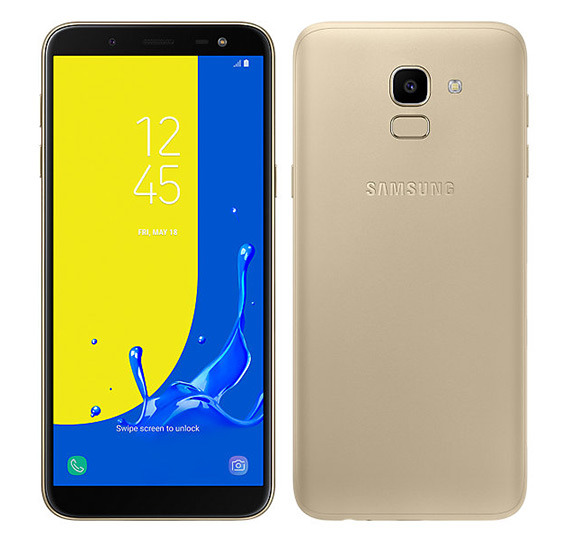
Inside, it features an Exynos 7870 octa-core processor clocked at 1.6GHz, 3GB of RAM and 32GB of internal storage. Good news is that you can expand this via a dedicated microSD card slot so you don’t have to give up a SIM tray in this dual SIM smartphone.
There’s a fingerprint scanner, a 13MP main camera and an 8MP selfie shooter that feature f/1.9 apertures, as well as a 3,o00 mAh battery to make sure everything stays powered.
Samsung has also equipped this smartphone with a fingerprint scanner that sits just below the camera module.
Samsung Galaxy J6 — 3GB RAM, 32GB storage — RM749
Where to buy:
Online: Shopee, Lazada
Store: Authorised Samsung retailers
[nextpage title=”Samsung Galaxy A6″]
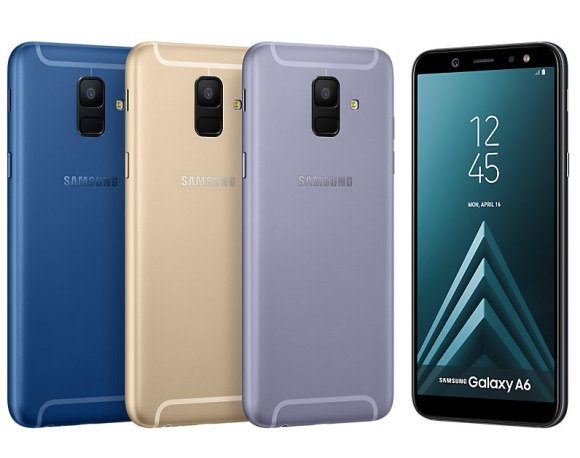 Alongside the entry-level Galaxy J6, Samsung also launched the Galaxy A6 and A6+ which is basically a more affordable version of the Galaxy A8 and A8+ premium mid-rangers. Unfortunately, the RM1,299 Galaxy A6+ is just over our RM1,200 budget, but the RM999 Galaxy A6 still fits. And, it comes with a bunch of upgraded features over the Galaxy J6.
Alongside the entry-level Galaxy J6, Samsung also launched the Galaxy A6 and A6+ which is basically a more affordable version of the Galaxy A8 and A8+ premium mid-rangers. Unfortunately, the RM1,299 Galaxy A6+ is just over our RM1,200 budget, but the RM999 Galaxy A6 still fits. And, it comes with a bunch of upgraded features over the Galaxy J6.
Most notably, the Galaxy A6 comes with new cameras, featuring 16MP sensors on both the front and the back, coupled with f/1.9 and f/1.7 aperture lenses respectively.
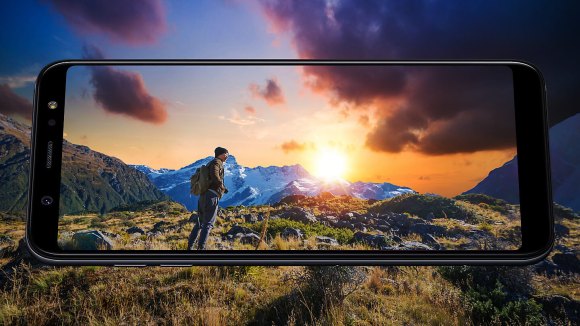
Unfortunately, the A6’s 5.6″ Super AMOLED display remains pushing a HD+ resolution of just 1480×720 pixels, but the phone itself has a cleaner and more upmarket look.
Inside, however, the Galaxy A6 shares the same kind of specs as the Galaxy J6, with an octa-core Exynos 7870 processor, 3GB of RAM and 32GB of internal storage that you can further extend via a microSD card.
Samsung Galaxy A6 — 3GB RAM, 32GB storage — RM999
Where to buy:
Online: Shopee, Lazada
Store: Authorised Samsung retailers
[nextpage title=”Moto G5s Plus”]
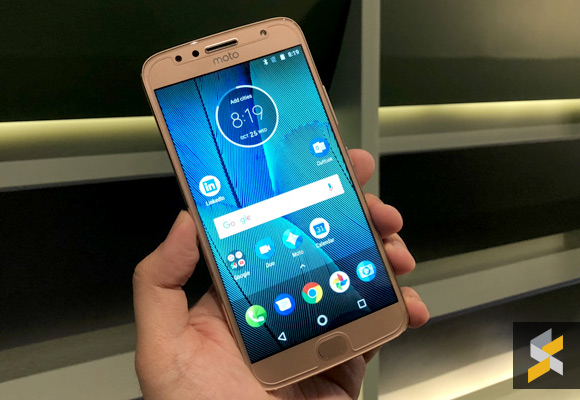
Moto has been a little quiet in Malaysia but the G5s Plus is definitely a capable smartphone. For fans of stock-like Android experiences, this is one of the few phones that offers that, plus a couple of added features like Moto’s gestures.
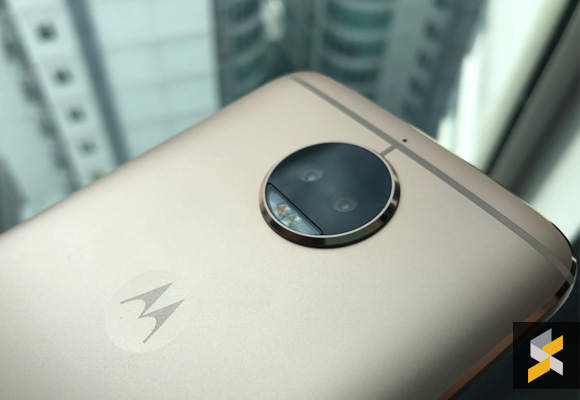
On the hardware side of things, the device is pretty standard, featuring a Snapdragon 625 processor, 4GB of RAM and 32GB of storage. Its also got a 13MP + 13MP dual camera system at the back and an 8MP selfie shooter in front for all your photography needs.
That said, if you were looking for a tall 18:9 screen with slim bezels, you will be disappointed because the handset comes with a regular 16:9 aspect ratio display with regular old bezels. Still, it pushes a resolution of Full HD 1920×1080 pixels so you do get a sharp 401 pixels per inch so that’s always nice.
Moto G5s Plus — 4GB RAM, 32GB storage — RM999
Where to buy:
Online: Shopee, Lazada
Store: Authorised Moto retailers
[nextpage title=”vivo Y85 & Y81″]
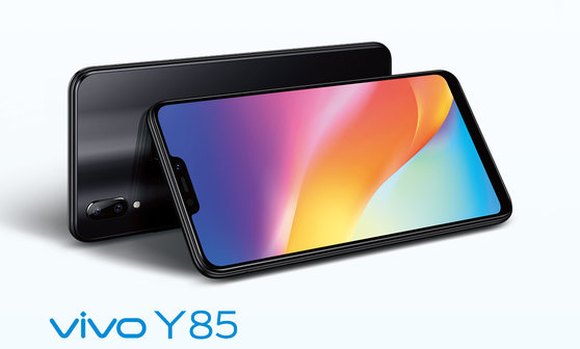
Following the launch of the vivo V9, the Chinese smartphone maker launched a pair of watered down versions of their hero selfie smartphone. These are the Y85 and Y81.
Both smartphones are pretty similar in specs, with a MediaTek Helio P22 octa-core processor at their hearts, a large 6.22-inch display that pushes a HD+ resolution of 1520×720 pixels, a 3,260 mAh battery, and 32GB of internal storage (expandable via microSD).
But, the more expensive Y85 does pack more features that edge it over the Y81. For starters, it has 4GB of RAM while the Y81 only has 3GB of RAM. vivo’s Y85 also packs a 13MP+2MP dual camera at the back plus an 8MP f/2.0 aperture selfie shooter up front.
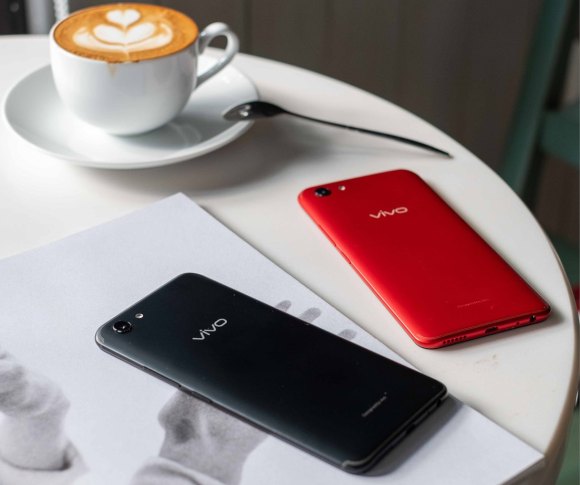
In contrast, the more affordable Y81 only comes with a single 13MP back camera and a 5MP front-facing camera. Oh, the Y81 also doesn’t come with a fingerprint scanner while the Y85 does. Both do have notches, however.
vivo Y85 — 4GB RAM, 32GB storage — RM999
vivo Y81 — 3GB RAM, 32GB storage — RM799
Where to buy:
Online: Shopee, Lazada
[nextpage title=”OPPO F5″]
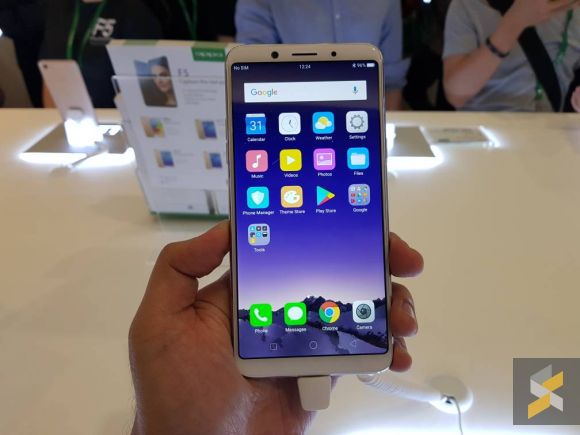
While the brand new OPPO F7 was just released in Malaysia awhile back, that smartphone unfortunately launched above the price limit of this guide. The good news for those who are looking for a smartphone that lives and breathes selfies is, OPPO’s F5 has just received a price cut, putting its RRP at just under RM1,000.
As far as specs are concerned, the handset features a 6-inch Full HD+ 18:9 LCD display that pushes a resolution of 2160×1080 pixels. At its heart, the phone has a MediaTek Helio P23 processor, 4GB of RAM and 32GB of internal storage. Keeping the lights on is a 3,200 mAh battery.
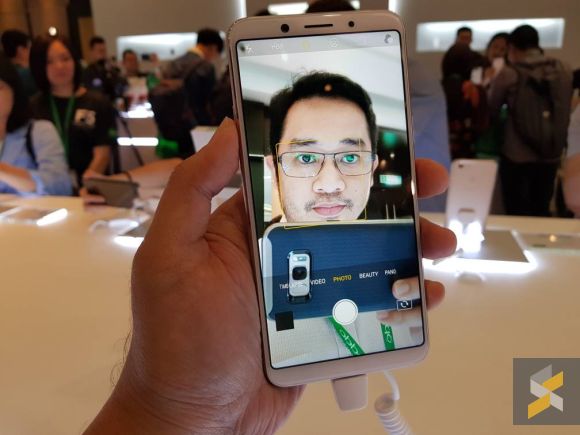
But if you’re looking at this phone, odds are you’re most concerned about the selfie camera and the OPPO F5 has a 20MP shooter with an f/2.0 aperture up front for your selfie needs. It comes with OPPO’s famous beautification features which can get pretty crazy. At the back, you’ve also got a 16MP sensor paired to an f/1.8 aperture lens for the times where you want to take pictures of things other than your face for whatever reason.
OPPO F5 — 4GB RAM, 32GB storage — RM999
Where to buy:
Online: Shopee, Lazada
Store: Authorised OPPO retailers
[nextpage title=”Neffos N1″]
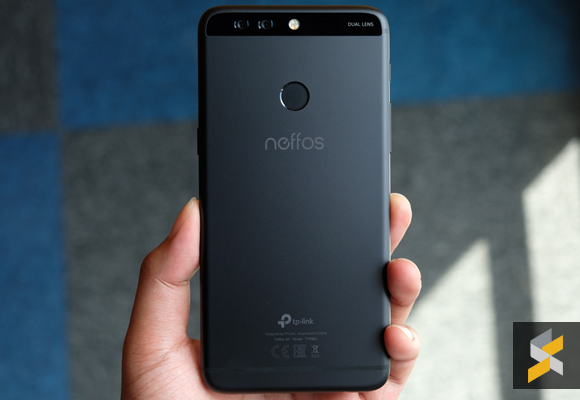
One look at the Neffos N1 and you might see the resemblance between it and a certain 2017 flagship from China. But that’s pretty much where the resemblance ends because the N1 — despite its flagship looks — is very much a mid-ranger.
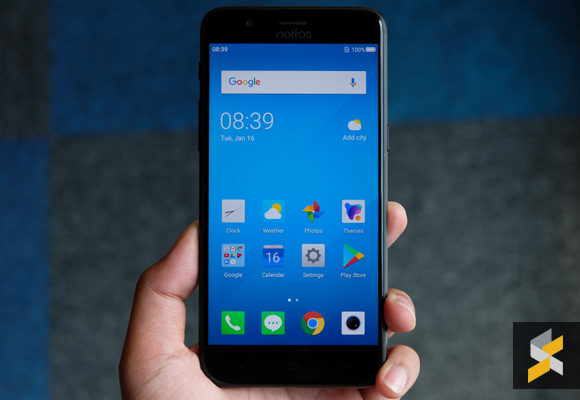
In front, the phone has a regular 16:9 Full HD display that pushes a resolution of 1920×1080 pixels across 5.5 inches. Inside, the handset is powered by a MediaTek Helio P25 processor, 4GB of RAM, 64GB of internal storage and has a 3,260 mAh battery to keep the lights on.
For photos, it does get a 12MP + 12MP dual-camera system at the back with an 8MP f/2.0 selfie camera up front. Its dual camera is similar to the Huawei P10, that it also shares a striking resemblance with, where one sensor is an RGB sensor while the other is a monochrome sensor.
Neffos N1 — 4GB RAM, 64GB storage — RM849
Where to buy:
Online: Shopee, Lazada
Store: Authorised Neffos retailers
[nextpage title=”HTC Desire 12 & 12+”]
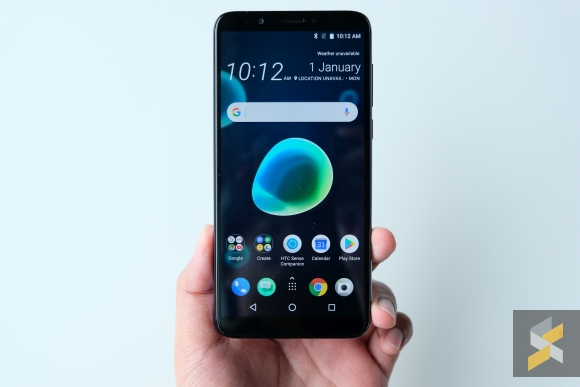
Despite the once prestigious names, HTC’s Desire 12 and Desire 12+ are the company’s sub-RM1,000 smartphone. These draw a lot of visual inspiration from HTC’s flagship U11 smartphone but with significantly watered down specs.
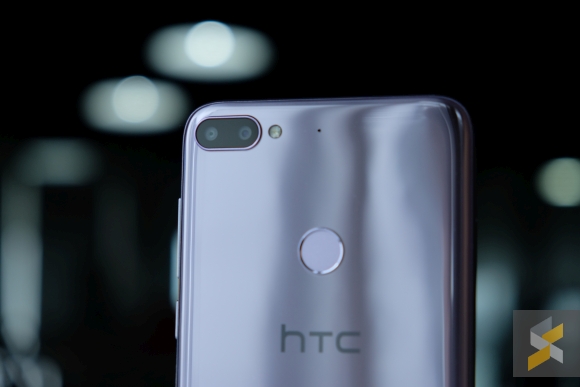
The Desire 12+ is the larger and more capable device of the duo. It’s got a 6″ 18:9 aspect ratio display but it only pushes a HD+ resolution of 1440×720 pixels. Inside, you’re getting an entry-level Snapdragon 450 processor, mated to 3GB of RAM and 32GB of internal storage. This model also comes with a 13MP+2MP dual camera module at the back for shallow depth of field effects. In front, you’ll be greeted by an 8-megapixel camera when you need to take a selfie. This phone also comes with a 2,965 mAh battery.
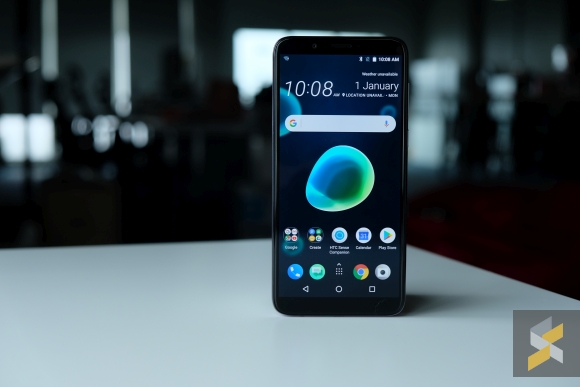
On the other hand, the smaller Desire 12 bumps screen size down to 5.5 inches but maintains the same resolution so you get more pixels per inch. Besides that, you get a MediaTek MT6739 processor instead, though RAM and storage remains the same. It also loses one camera at the back so you’re left with a single 13MP main shooter with an f/2.2 aperture lens while the front also gets bumped down to a 5MP selfie shooter. Battery capacity also takes a hit, now only coming in at 2,730 mAh.
HTC Desire 12+ — 3GB RAM, 32GB storage — RM899
HTC Desire 12 — 3GB RAM, 32GB storage — RM739
Where to buy:
Online: Shopee
Store: Authorised HTC retailers
[nextpage title=”Sony Xperia L2″]
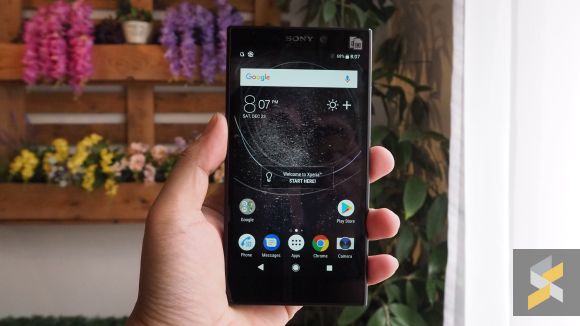
The Sony Xperia L2 is the most affordable smartphone Sony makes and now that GST is zero-rated, it’s now even more affordable.
Sony’s budget handset features a 5.5-inch HD IPS display, that pushes a resolution of 1280×720 pixels, up front. Inside, it’s powered by a MediaTek MT6737T processor paired with 3GB of RAM and 32GB of internal storage — storage that you can further expand via a microSD card slot.
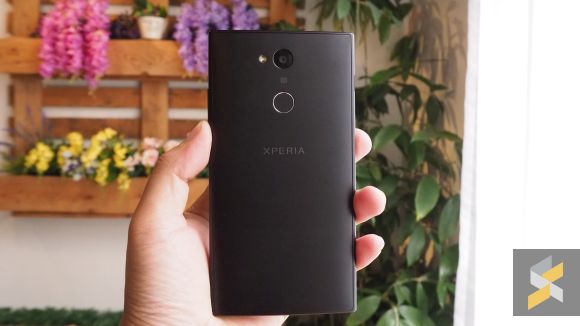
For capturing images, the smartphone comes with a 13MP f/2.0 main camera at the back and an 8MP 120-degree super wide selfie shooter up front with an f/2.4 aperture lens. There’s also a 3,300 mAh battery with Sony’s QNOVO adaptive charging technology.
Sony Xperia L2 — 3GB RAM, 32GB storage — RM942.25
Where to buy:
Online: Shopee, Sony Malaysia, 11street
Store: Authorised Sony retailers
[nextpage title=”Xiaomi Redmi S2″]
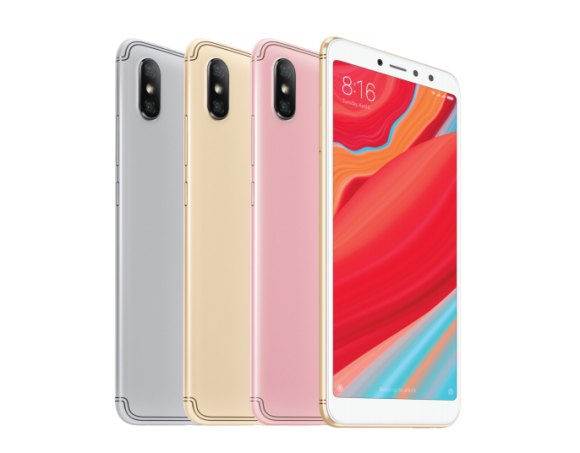
In a bid to push AI-powered photography into an even lower price range, Xiaomi launched the dual-camera Redmi S2. This device features a 12MP f/2.2 camera + a 5MP secondary camera at the back, combined with AI, to accurately separate your subject from the background. This is a mode more commonly known as Portrait Mode and now you can have it in a device that starts at RM679.
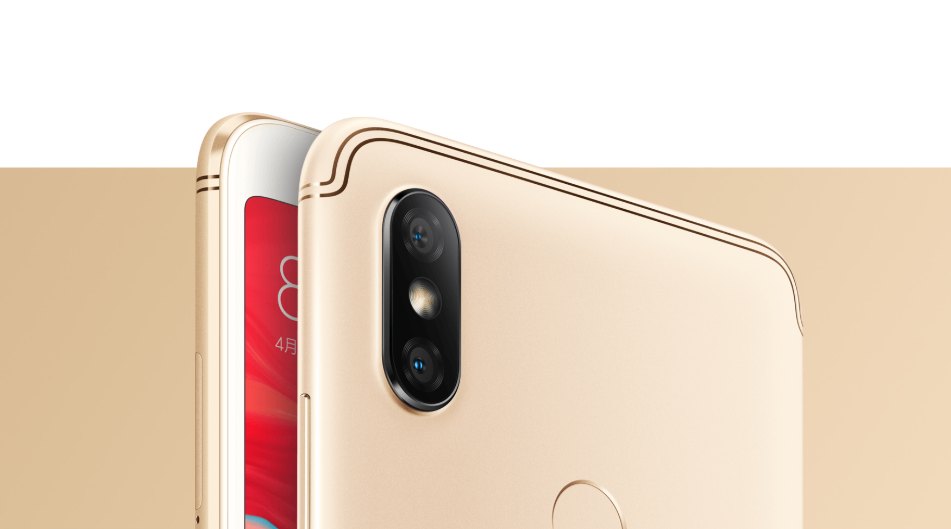
For that money, you’re also getting a frugal 14nm Snapdragon 625 processor, 3GB of RAM and 32GB of internal storage with a dedicated microSD slot for even more storage, plus a 3,080 mAh battery.
If you want to pony up even more, you can get the high-spec variant for RM849 that bumps RAM and storage up to 4GB and 64GB respectively.
Perhaps the weakest point about this smartphone is its display. Yes, it has a large 5.99-inch IPS panel, but it only pushes a HD+ resolution of 1440×720 pixels.
Xiaomi Redmi S2 — 3GB RAM, 32GB storage — RM679
Xiaomi Redmi S2 — 4GB RAM, 64GB storage — RM849
Where to buy:
Online: Shopee, Lazada
Store: Authorised Xiaomi retailers
[nextpage title=”OPPO F7 Youth”]
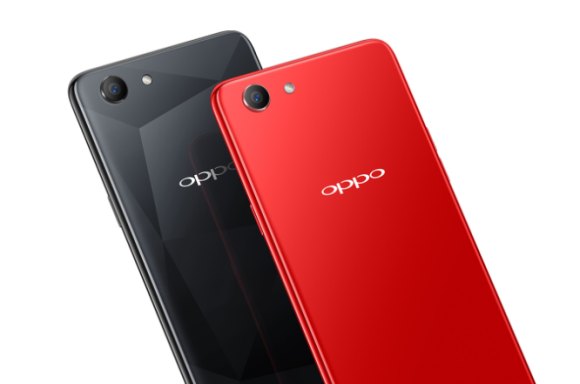
While OPPO’s standard F7 is still too expensive to be included in this list, the Chinese smartphone maker did launch a more affordable version of their new selfie expert. It’s called the F7 Youth and it actually retains a lot of the more expensive F7’s specs despite the lower price tag.
For instance, the F7 Youth still features a Full HD+ IPS display up front despite being a little smaller, measuring 6 inches instead. Inside, the phone has a MediaTek Helio P60 processor with 4GB of RAM and 64GB of internal storage (expandable via microSD) — identical to that of the F7. To top things off, the F7 Youth comes with a larger 3,410 mAh battery too.

That said, the phone does make a number of spec-sheet compromises, most notably in its camera, as both the front and rear shooters have been knocked down to an 8MP sensor (with AI beautification) and a 13MP sensor respectively.
But, perhaps the biggest omission is the F7’s fingerprint scanner, which the F7 Youth does not have. Still, the device does have facial unlock and no notch so that is kind of a trade-off.
OPPO F7 Youth — 4GB RAM, 64GB storage — RM1,099
Where to buy:
Online: Shopee, Lazada
Store: Authorised OPPO retailers
[nextpage title=”ASUS ZenFone Max Pro (M1)”]
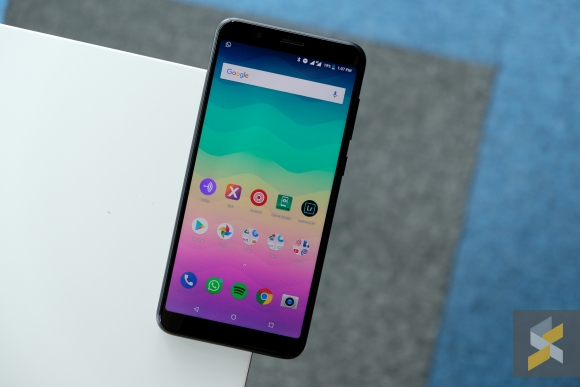
There are many things that can be said about the ASUS ZenFone Max Pro M1, but there’s really only one thing you need to know about it: This smartphone is just incredible value-for-money.
On specs alone, the ZenFone Max Pro can stand toe-to-toe with even the best on this list. It’s got a sharp 5.99″ IPS panel up front with slim bezels, a Snapdragon 636 processor inside, up to 6GB of RAM and up to 64GB of internal storage.
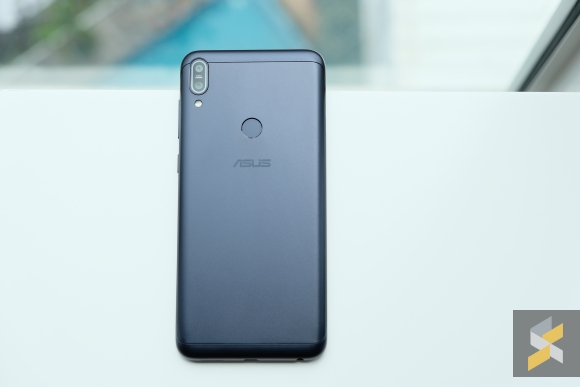
Couple that with the device’s massive 5,000 mAh battery and this phone has a lot going for it, including the mostly metal enclosure that keeps its internals from being externals.
It also features two camera setups between the three models, both of which make up a dual-camera at the back and a selfie shooter in front. The base model with 3GB of RAM and 32GB of storage features a 13MP + 5MP dual-camera at the back and an 8MP selfie shooter up front. Meanwhile, the mid spec (4GB/64GB) and high spec (6GB/64GB) models both pack a 16MP + 5MP camera at the back and a 16MP selfie shooter up front.
I will note that when I first got my unit, the camera app was a mess. It would crash pretty often and was very slow to boot. However, my colleague’s review unit didn’t have that problem.
Then, ASUS pushed an updated OTA that supposedly addresses these issues. I have noticed that on my particular device, the camera app seems more reliable and responsive, however, it still crashes on occasion, but less often than it used to.
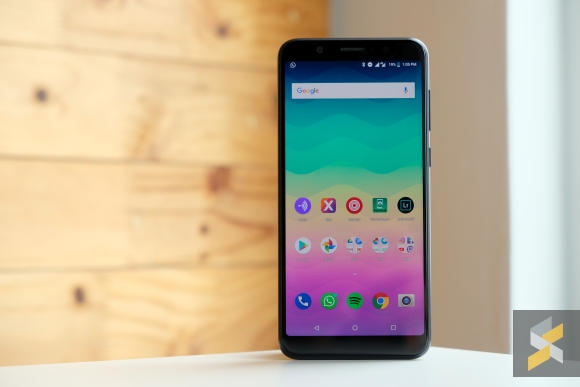
However, the thing that I like most about this smartphone is the fact that it runs on a near-stock version of Android 8.0 Oreo out of the box instead of ASUS’ usual ZenUI skin.
And, you get all of that for a price tag that starts at RM699. What’s more, if you manage to snag this phone at one of its flash sales, you could walk away with the base model ZenFone Max Pro for just RM599.
Read our full review for more details.
ASUS ZenFone Max Pro M1 — 3GB RAM, 32GB storage — RM699
ASUS ZenFone Max Pro M1 — 4GB RAM, 64GB storage — RM849
ASUS ZenFone Max Pro M1 — 6GB RAM, 64GB storage — RM999
Where to buy:
Online: Shopee, Lazada
Store: Authorised ASUS retailers.
[nextpage title=”Nokia 6.1″]
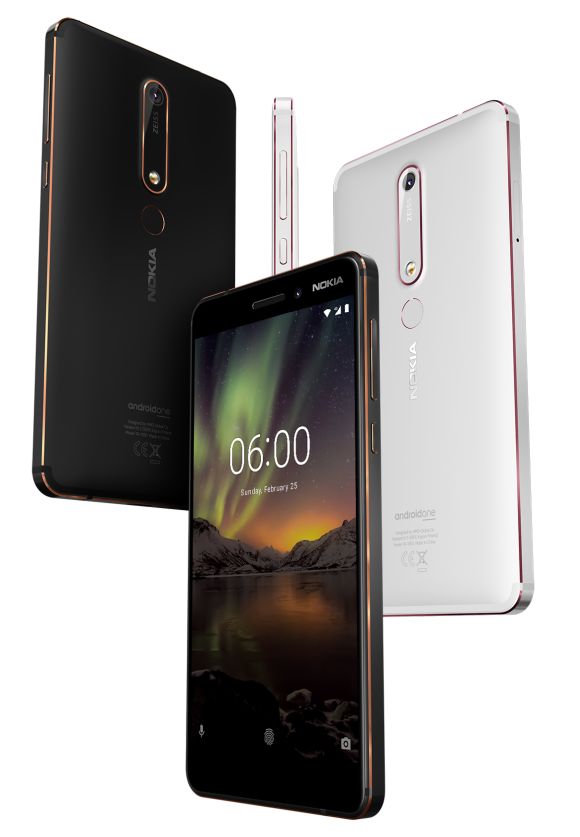
If you’re a fan of rock solid build quality, stock Android and nostalgia, odds are, you’ll be a fan of the brand new Nokia 6.1. This phone is the latest device in Nokia’s mid-range and it is a significant upgrade over the handset it succeeds.
Inside, the Nokia 6.1 — also known as the Nokia 6 (2018) — packs a Qualcomm Snapdragon 630 octa-core processor, 4GB of RAM and 64GB of internal storage. Certainly a big improvement over the previous handset’s entry-level Snapdragon 430 chip.
Besides that, the Nokia 6.1 also features a 16-megapixel main camera at the back with an f/2.0 ZEISS lens and an 8MP f/2.0 aperture selfie shooter up front for capturing photos.
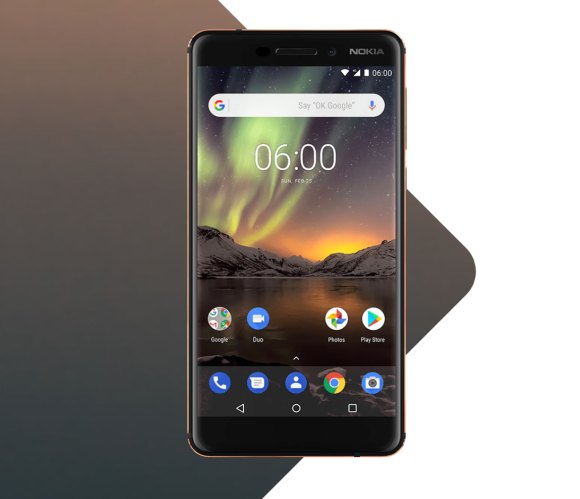
That said, the key features for every Nokia Android smartphone have always been their stock Android One software and solid build. Here, that hasn’t changed as the Nokia 6.1 comes with stock Android 8.1 Oreo out of the box and features a solid 6000 series aluminium body.
Perhaps the biggest drawback of this phone is its relatively small 3,000 mAh battery and relatively high price tag but I guess compromises had to be made.
Nokia 6.1 — 4GB RAM, 64GB storage — RM1,100
Where to buy:
Online: Shopee
Store: Authorised Nokia retailers
[nextpage title=”Comparison table”]
Here’s a quick look at all the phones and their specs so you can quickly compare each device with the other spec-for-spec. It is important to figure out what you want a smartphone to do before deciding what phone to buy.
For example, if you’re looking for good battery life, then you might want to consider devices with a Snapdragon 625 or Snapdragon 636 processors that also have big batteries around 4,000 mAh and above.
If software updates are important to you, then you should definitely consider phones with stock or close to stock operating systems like the Xiaomi Mi A1, Nokia 6.1 and ASUS ZenFone Max Pro, for example. You can also look at devices that launch running Android Oreo and above because that is the latest version of Android at the time of this guide’s publishing (July 2018).
If camera is your thing, this year is your lucky year because there are a number of devices that feature much more capable cameras than the devices that grace last year’s list. Xiaomi’s Redmi Note 5 and Mi A1 are two good examples.
Don’t be fooled into thinking that a dual camera system automatically means a better camera experience — because it doesn’t. Check out reviews for those devices and you should be able to get a good idea on their camera performance. That said, if selfies are your thing and you want a whole bunch of beautification features, then you can’t really go wrong with OPPO’s F5, F7 Youth, vivo’s V7 or Huawei’s Nova 2i.
Performance should also factor into your purchasing decision because a laggy phone is almost always a nasty experience, unless you’re some kind of masochist or something. If you can afford it, look for devices with Qualcomm’s Snapdragon 625, Snapdragon 636, MediaTek’s Helio P60 or Kirin’s 659 processor and you should generally get a pretty smooth experience. Moving down that, MediaTek’s Helio P23 and Helio P25 processors are also reasonably good.
Perhaps one of the most important factors you need to consider is internal storage. The good news is that all the phones here come with at least 32GB of internal storage which I think is the bare minimum for a smartphone in 2018.
If you’re someone who uses dual-SIM and you need microSD expansion as well, you should consider devices with a dedicated microSD slot. Hybrid options mean you have to give up your secondary SIM for additional storage and vice versa.
Finally, if you’ve scanned the entire table and still can’t decide what phone you should get, check out our Editor’s Choice page where we’ll recommend some of our favourites from this list.
[nextpage title=”Editor’s Choice”]
This was honestly the hardest one I’ve had to write so far. There was a lot of debating going on between us in the office because these phones are honestly just stellar devices. Coupled with the recent price drops, it was just such a tight fight between the top three devices that I couldn’t lump them into a category.
Therefore, I’ve decided to go for a podium approach between the top three smartphones under RM1,200. Keep in mind that no matter which one you get, you’ll probably be a happy camper.
#1. Xiaomi’s Redmi Note 5 is still king of the hill
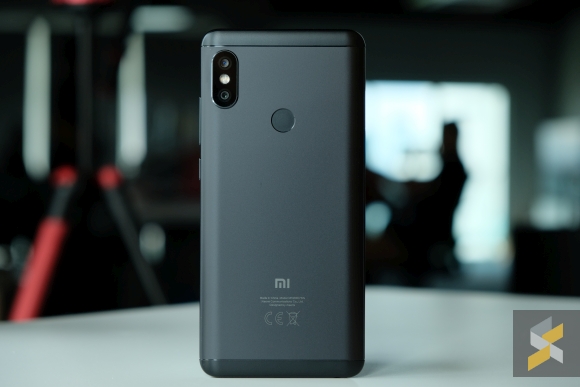
In first place, despite the competition, despite the price cuts and despite all the upstarts who have tried to overthrow it, Xiaomi’s Redmi Note 5 still reigns supreme. With its recent price cut, it’s even harder to ignore this handset now.
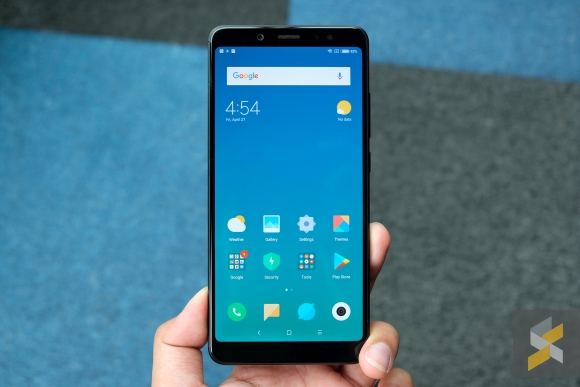
As much as it pains me to pick a device running MIUI (because I’m a stock Android fan) as the best handset you can buy for under RM1,200, when there are several solid stock Android smartphones on this list too. But it’s true. The Redmi Note 5 is just such a complete package that it’s hard to find fault with it.
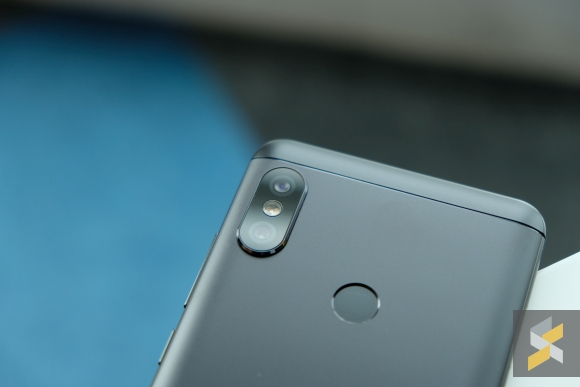
Solid performance from the Snapdragon 636 processor, up to 4GB of RAM and 64GB of internal storage. Solid battery life from the 4,000 mAh cell. Good image quality from the 12MP + 5MP dual-camera at the back. A sharp and responsive 5.99-inch display up front. And a nice metal build to round it all off.

All, for under RM1,000. Practically unbeatable. You can read our full review of the Redmi Note 5 if you want a more detailed breakdown of the pros and cons.
Where to buy:
Online: Shopee, Lazada
Store: Authorised Mi retailers
#2. A significant price cut keeps the Xiaomi Mi A1 in second
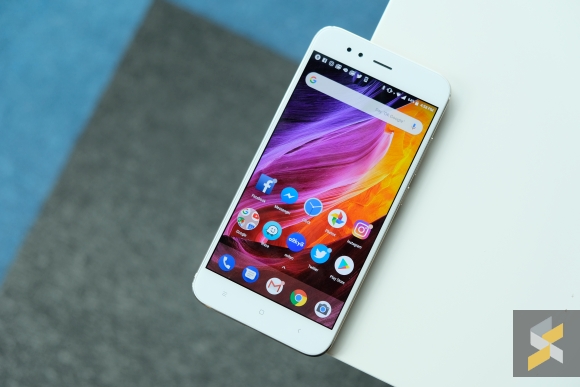
Yes, the Xiaomi Mi A1 is a relatively old smartphone by now, but anyone who has used it will tell you that it has aged really well. Our units are still chugging along smoothly, with the Snapdragon 625 processor and 4GB of RAM still able to run games like PUBG Mobile easily.
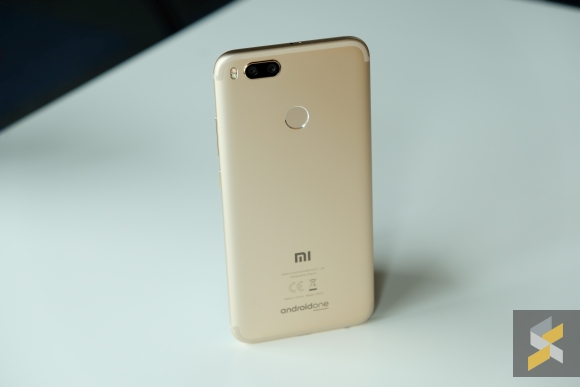
The Mi A1 also has one of the nicest builds in this list, with a sleek unibody design that isn’t marred by plastic caps or a plastic frame. Then, there’s USB-C charging, 802.11 ac WiFi and a dual main camera capable of portrait mode shots.
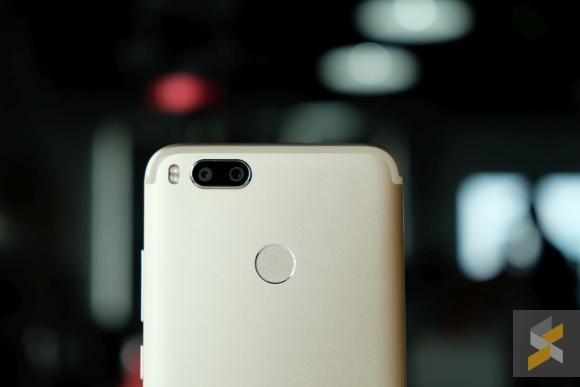
Perhaps the two biggest weaknesses of this device are its relatively small 3,080 mAh battery and the dated 5.5-inch IPS display with huge bezels. That said, the Mi A1 we have can still comfortably last a day and its Full HD panel still looks great so I wouldn’t classify these as deal-breakers.
But, the biggest reason this handset edges out the device in third place is the fact that it received a pretty significant price cut. Now, the 32GB base model has an RRP of RM599 while the 64GB model officially retails for RM799 (but you can get it for much lower), which is just amazing value for money.
Where to buy:
Online: Shopee, Lazada
Store: Authorised Mi retailers
#3. ASUS’ ZenFone Max Pro M1 gets so much right for so little money
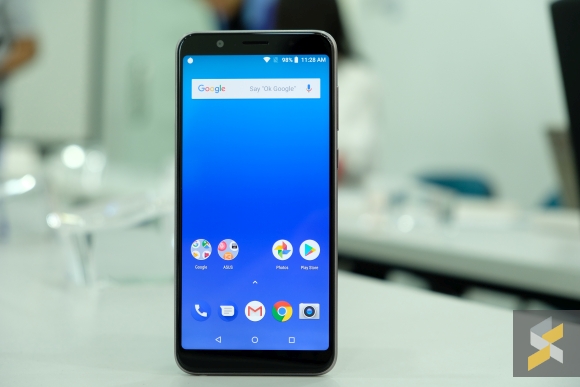
Just when I was about to lose faith in ASUS after their blunders with the ZenFone 3 and ZenFone 4 lineups, the company redeems itself with a spectacular showing in the ZenFone Max Pro M1. Some might even wonder how they managed to make a profit selling this smartphone.
I mean, look at the specs. It’s got a 5.99-inch Full HD+ IPS panel up front, a Snapdragon 636 processor inside and a choice of up to 6GB of RAM and 64GB of internal storage, all for under RM1,000. Oh, did I mention that it has a 5,000 mAh battery and is the first ASUS device to run a near-stock Android experience instead of ZenUI?
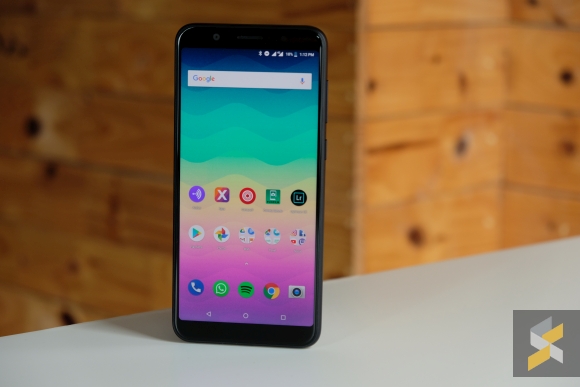
But, ASUS did make some compromises with this device. One obvious thing is the handset’s lack of 802.11ac WiFi. The other, is the smartphone’s camera which I think has the worst experience of the three devices I’ve listed here.
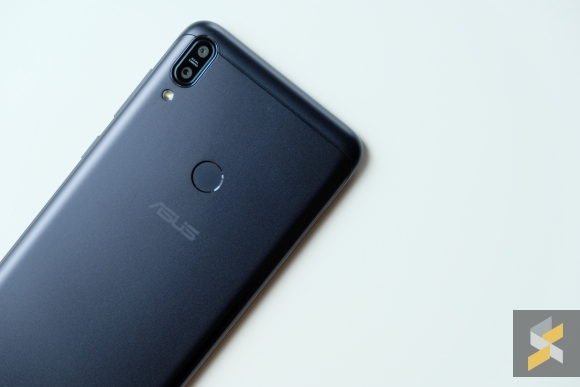
That said, the ZenFone Max Pro isn’t a distant third or anything like that. As I said earlier in this article, all three of these phones are so close together that it was a pretty long debate before we settled on this list and I think if you’re on a tight budget, you’d be hard pressed to find better value smartphones.
Especially if you can pick up the ZenFone Max Pro M1 during one of its flash sales.
Be sure to read our full review for all the details.
Where to buy:
Online: Shopee, Lazada
Store: Authorised ASUS retailers.

